You know me, I am all about 'forgotten' artists (I can't stand it when journalists say someone is 'forgotten', so possibly 'less fashionable' is better? That sounds a bit judge-y. 'Lesser known'? 'Obscure'? Anyway, you get the picture...) and so I get excited when books come out about them, which both inform and raise the profile of their art. I also am up for a bit of Feminism and Pre-Raphaelitism, so Alice Eden's new book was right up my alley...
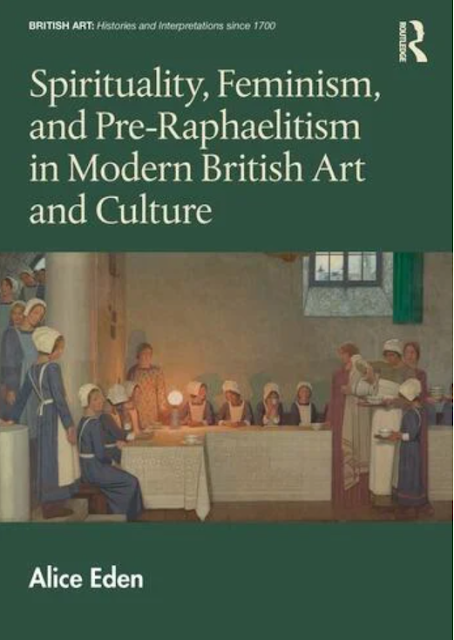
Okay, let's get the price out of the way, as it is £130 and not everyone gets a review copy as I was fortunate enough to receive. We have seen such prices in a number of books of the last few years which people were desperate to get their hands on. In such cases, the prices came down eventually and the library will get you a copy in the meantime. I'm guessing the sort of publisher that could make this book cheaper are few and far between these days as the little presses get swallowed up by the bigger groups who are less risk-taking and more about the profits above all else. It's a shame but here we are. Let's get on to the book itself and not my predictable rant about publishing...
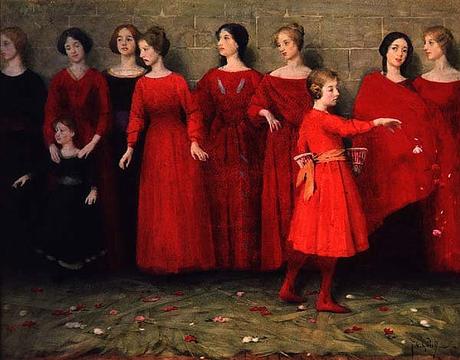
They Come (undated) Thomas Cooper Gotch
So, Alice's book centres around three artists from the later Victorian period - Thomas Cooper Gotch, Robert Anning Bell and Frederick Cayley Robinson - and how their art can be seen to explore the subjects of female spirituality, modernity and the past. I think critics in Britain struggle with with nineteenth to twentieth century 'modern art' as, unlike other countries, we don't go from highly figurative paintings of Medieval women in towers to dipping a cat in paint and throwing it at a canvas, so writers have always struggled to see the subtleties of our art movement from the past to the future. I believe Sister Wendy described Pre-Raphaelitism as a cul-de-sac, which is charming. Also, art historians and critics are not a bright bunch on the whole and so wouldn't be able to tell a gradual nuance from their elbow. As Alice points out, the work of these three gorgeous artists existed in and responded to The Modern World (TM), often engaging in amazingly symbiotic ways - angels and aeroplanes, knights and sewing machines. I was immediately reminded of a beautiful Maxwell Armfield painting of a woman playing a harp, looking for all the world like Saint Cecilia, while post Second World War New York is seen behind her. These two things can exist together. Didn't Burne-Jones say something to the tune of 'the more I see of modern life, the more I paint angels?' - little did he know that the two aren't mutually exclusive...
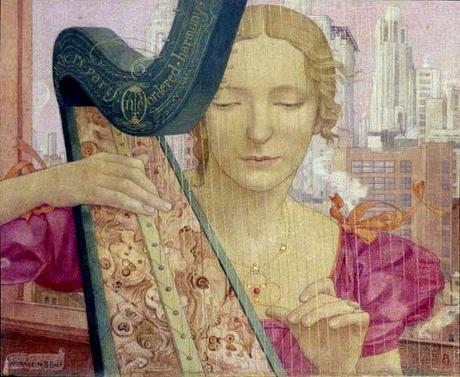
Music in New York (1946) Maxwell Armfield
I blame the fin-de-siecle, quite honestly. It made everyone get all spiritual and that combined with the growing awareness of women's rights and votes. There is an argument (I have often made it here on this blog) that a lot of male artists (and much of society) did not respond positively to the growing volume of female voices, and there is a layer of threat in the feminine occult and female spirituality, but there is also reason to see its sudden existence. In this book, you can see the case made for the evolution of Pre-Raphaelitism from Truth to Nature to Trust to Supernatural as the Victorian obsession with ghosts became the Edwardian love of Modernism and magic.
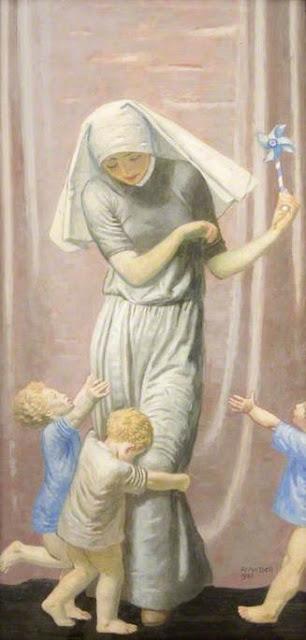
The Toy Windmill (1931) Robert Anning Bell
Let me just get my 'Pre-Raphaelite' rant out of the way too. Goodness, I am filled with the rants today, but honestly, it's been that sort of month. I am aware that the term Pre-Raphaelite is both over- and under-used. In some quarters, it is seen as sacred - if it isn't the work of the original Magnificent Seven, then you don't get to call it Pre-Raphaelite. Others apply it to any woman with red hair. I think we can find a middle ground - I would rather the term was over-used because it keeps it in the modern consciousness, however when it comes to describing art what we need to agree on is that the work of the Magnificent Seven is Pre-Raphaelite and then possibly everything else is Pre-Raphaelitism. Surely that will keep the purests happy? That way we only need to argue about what constitutes Pre-Raphaelitism, which includes the Met Galathe Met Gala apparently. Sorry, back to the review...
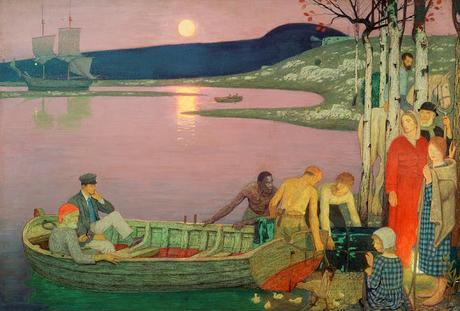
The Call of the Sea (1900) Frederick Cayley Robinson
Glasgow plays a big connecting role in all this - the Celtic Revival held a spiritual and mystical heart, unsurprising, as artists such as John Duncan were connected to the theosophical movement at the time, and Belgian Symbolist artist Jean Delville was Head of Painting at the School of Art from 1900. It is a relief and a definite refocusing to admit that maybe, just maybe, it's not all about London all the damn time. Stuff happened elsewhere that is actually important to how we could see British Art and its evolution. The moment we step from the Capital it is easy to see that Britain didn't just drop off the artistic horizon. Marvellous.
What feels very relevant to our modern life are Victorian/Edwardian notions of the erosion of masculinity. Back in 2012, I wrote a piece about how Burne-Jones turned everyone gay in the 1880s and it is very much seen as a response to not only the more mystical style of art, but also predictably the rise in the power of women. I find it all really modern; you only need to venture onto the wrong side of social media to find out the horrors of mewing, man or bear and all that to know that we are not alright. What is oddly comforting is that over a century ago they were having the same conversations, albeit with a corset on and less bears. If ever you want to argue that British Victorian and Edwardian art is modern art, reflect on how our views, issues and struggles are so very alike. Then feel a bit sad.
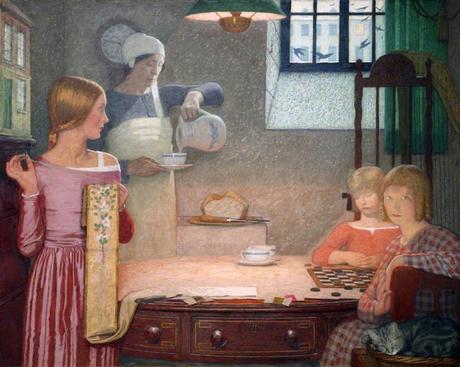
Childhood (1926) Frederick Cayley Robinson
This is a great book, not least because I feel really ranty and argumentative so obviously it is thought-provoking. Alice's three chaps are artists who massively deserve our attention, not least because I think Gotch got dismissed in the whole Lewis-Carroll-is-a-kiddie-botherer of the early 1970s, which I find infuriating, but again, art historians are the worst. I do have a concern (and I in no way want to come off like 'I'm not like other girls' here) that in our rush to find lost artists, we are concentrating on traditionally marginalised one, which is brill and correct, but we are not dragging along other excellent artists who had the misfortune to have been born white and male but missed the first bus of rediscovery. There is room for all, which is surely the point, and so we would do better to start talking about the whole history of art, which surprisingly includes men. Arguably, by leaving out the patriarchy we miss the context in which everyone was working. Context is everything.
This is a richly illustrated book with images that are possibly new to everyone, or at least not so familiar. It's an academic but accessible read and will get you thinking and talking. It is new ways of looking at familiar ground and bringing the way we see our home-grown art into the twenty-first century. It's about time.
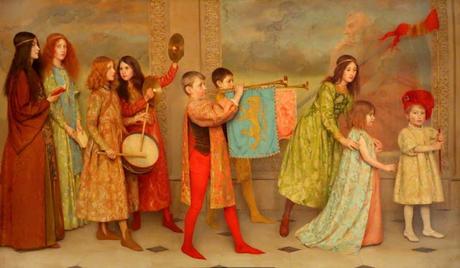
A Pageant of Childhood (1899) Thomas Cooper Gotch
Spirituality, Feminism and Pre-Raphaelitism in Modern British Art and Culture is available from Routledge and all good book shops now.

